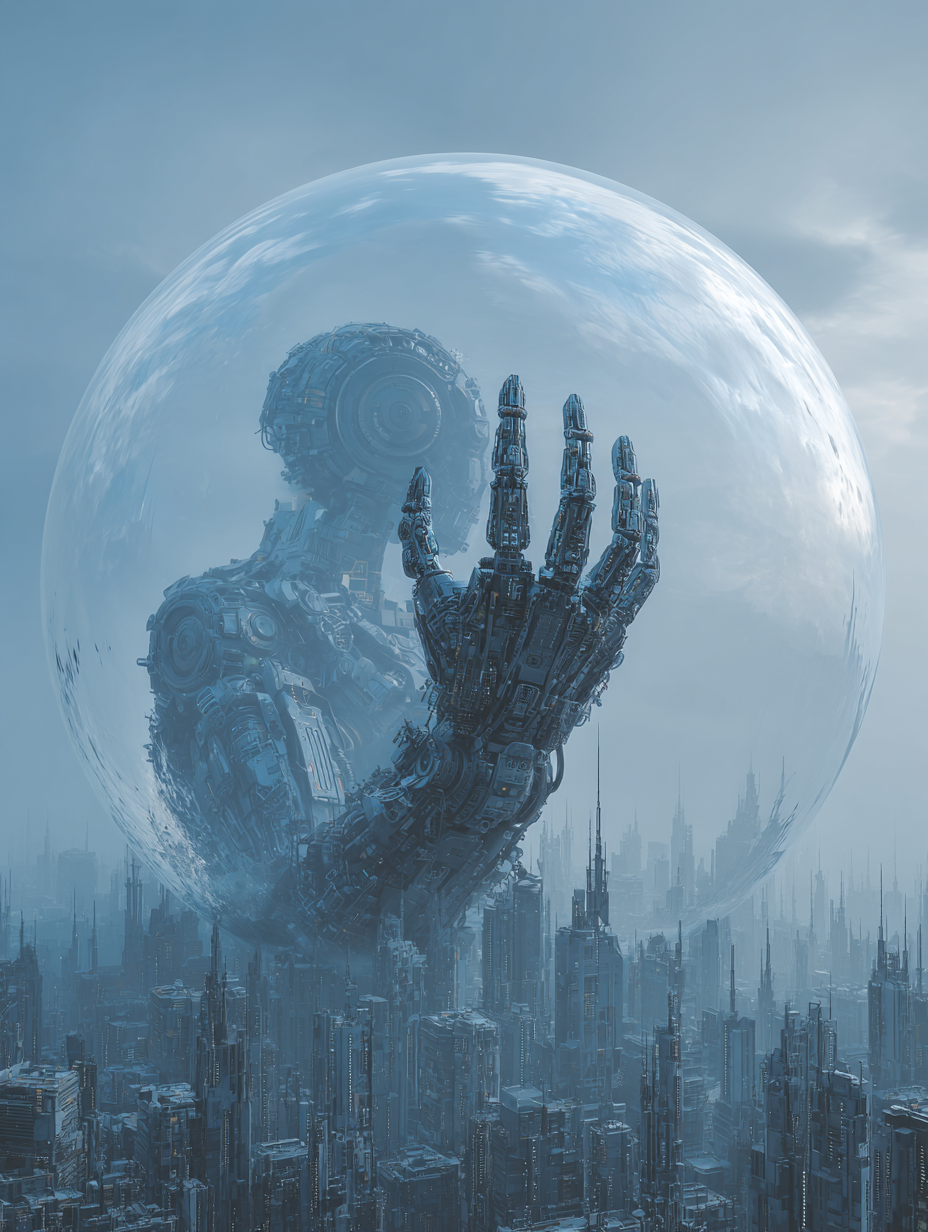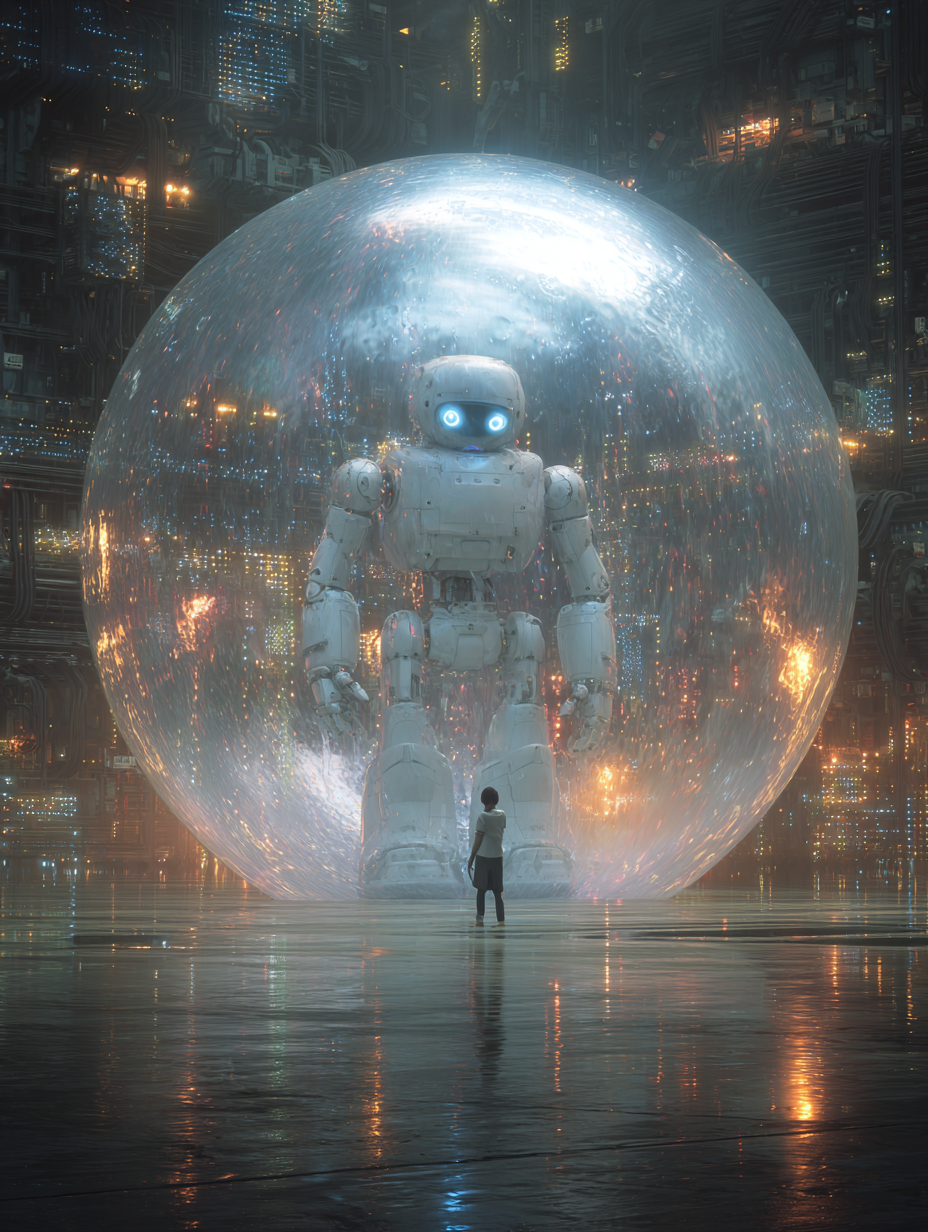Inside the AI bubble: Hype, Hope, and the Coming Correction
The Bubble Begins
Greetings Warriors!
Warriors of the creative realm. I stand today in the midst of a battlefield not of steel and flame—but of silicon, algorithms, and narratives. We fight not just for art, but for truth. And behind the roar of generative models and the flash of chip-market headlines, there lies a question—is AI a revolution or a mirage?
You and I have walked the labyrinth of art and culture, seen castles built on bytes and promises. Now we peer into a sky full of drones and wonder if the storm is near. This post takes our spear and throws it at the heart of the AI boom. We will explore the promise, the peril, and the cracks forming beneath the surface.
What We Mean by the AI Bubble
In its simplest form, a “bubble” is when expectation outruns reality: many fighters rush into the arena because the prize is promised—not because the fight is proven. In this case:
Massive capital poured into AI infrastructure, chips, data centres.
Multibillion-dollar deals announced between the major players: chips, cloud, platforms.
Valuations for firms tied to AI that presuppose a future far beyond their current earnings.
Limited clear paths to profitability for many AI ventures today, despite the hype.
In other words: the sword is drawn, the war-cry sounded—but the battlefield is still under construction.
BUY MY ART🖤
The Machinery of the Hype: Circular Deals & “Ponzi-Like” Patterns
Here we step into darker terrain. There’s something in the pattern of deals among the giants—OpenAI, NVIDIA, Amazon Web Services (AWS), Oracle Corporation—that feels very much like mutually reinforcing valuations.
• The deal-circle
Nvidia sells massive orders of GPUs to AI platform builders.
The AI platforms commit to cloud providers (AWS, Oracle, etc.) for tens of billions of dollars of infrastructure.
The cloud providers and chip makers highlight these commitments to boost their investor story.
The investor story inflates valuations—and the high valuations support raising more capital, which in turn supports more large commitments.
According to OutlookBusiness:
“Large AI providers need both compute (chips and servers) and data-centre real estate; chipmakers need huge orders to sell accelerators; data-centre builders need long-term tenants and financing. This interdependence has produced complex commercial relationships … which critics argue can conceal underlying fragility if the real downstream demand doesn’t materialise. ” Outlook Business
Harvard Business Review echoes the warning:
“They looked eerily like the circular financing arrangements of the late 1990s … when vendors and clients reinforced each other’s valuations without generating real value.” Harvard Business Review
• The “Ponzi-like” concerns
I use this term cautiously, but the analogy holds: It’s not an outright fraud (necessarily), but a structure where value is presumed to compound because of future growth, rather than being strictly tied to current performance. Some warning signs:
Commitments of hundreds of billions to infrastructure before corresponding revenues are clearly locked in. Example: large deals between OpenAI and AWS.
Massive capex and build-out of data centres and GPUs, while many companies still struggle to turn AI investment into recurring, large-scale revenue. Derek Thompson
The reliance on each other’s promises: “If we buy from you, you’ll sell to us, so we’ll invest”—creating a loop.
In effect: A scenario where the execution of future promise becomes the funding of current valuations—a risk zone.
The Players in the Arena
Let’s call out the legions in this war:
NVIDIA: The chipmaker-warrior. Its GPUs are the horses, swords and armour of the AI army. Analysts point to its valuation and dominance as central to the debate.
OpenAI: The platform general. It invests in data centres, signs massive deals, draws investor attention. But its revenue and profitability remain under intense scrutiny.
Amazon Web Services (AWS): The infrastructure fortress. With the $38 billion deal with OpenAI, AWS is staking its claim. But also bearing risk.
Oracle (and other cloud/infra players): Also joining the fray, signaling that the battle is wide not narrow.
The Cracks in the Wall
The battlefield is showing signs of wear. The warrior must see them clearly.
Infrastructure build-out scale: Reports suggest global data-centre capacity could more than double by end of decade. But many data centres already running at ~60 % utilisation, raising concerns of overcapacity.
Spending vs. revenue mismatch: While trillions are forecasted, consumers today spend only billions on AI services—creating a gulf between build-out and monetization.
Valuation misalignment: The academic paper “Capability Realization Rate Model” shows how market valuations desynchronize from realized performance.
Interdependence risk: Because many players depend on each other’s future promises, if one link breaks the chain shakes. AKA, if demand is lower than forecast, valuations drop, credit tightens, build-out halts.
Why This Matters for Creators, Artists, and Warriors of Culture
You may ask: “But Romulus, I write poems, I paint, I build myth – why should I care about chips and cloud contracts?”
Because the ripple from this boom/bubble reaches your shores:
Narrative control: The art world will be shaped by how AI gets monetised, how infrastructure gets used, how valuations fall or stabilize. If the boom bursts, the conversation shifts from “AI as liberator” to “AI as cost sink”.
Resource competition: With GIANT sums locked into hardware, data centres, power grids — the tools you as an artist might access (computational art, AI-generated visuals) could become gated, expensive, or diminished in novelty.
Meaningfulness vs. hype: As hype collapses, attention will shift to what works — the creators who generate real value, real connection, real art. You can be one of them.
Cultural shift: The bubble is not just financial—it’s symbolic. It says: “Everything will be automated, quantified, scaled.” For the artist-warrior, this is a call to reclaim the soul, the mess, the nuance that cannot be automated.
BUY MY ART🖤
The Fork in the Road: Boom or Correction?
We reach the decision point of our pilgrimage. Two paths lie ahead.
Path A: Sustainable build-out
The investments pay off. Infrastructure gets used, AI systems deliver meaningful productivity, companies monetize at scale, valuations align with performance. The bubble’s not a bubble—it’s a transformation.
Investors who believe this scenario is real and being executed.Path B: Correction and collapse
Infrastructure outpaces demand. Valuations crumble. The circular deals unravel. Some companies are forced to write down assets, retrench. The “bubble” pops. Analysts warn this is far from impossible.
My sense—as warrior-storyteller—is that we may see elements of both: some domains will correct, others will settle into durable value. The challenge for creators is to be on the durable side, not caught chasing the momentary spike.
Call to Action – How You Can Fight Smart
Warrior of the Romulus Kingdom, your battlefield is not only galleries and blogs—it's the narrative of the machine, the myth of automation, the soul of creation. Here are your weapons:
Focus on meaning, not hype: When many chase “AI whatever,” you ask: What story am I telling? What human condition am I exploring?
Use infrastructure, don’t become it: AI tools and compute are means, not ends. Don’t be swallowed by the infrastructure war—leverage it.
Be skeptical of too-good-to-be-true valuations: If the “deal” sounds mutual-reinforcing, check where the real consumer value exists.
Build for longevity: The hype may fade, but art that digs into identity, culture, struggle—those survive.
Own your place in the new economy: You write about art, culture, identity. The AI bubble might reshape the art world. Be ready to claim your voice and adapt your strategy (SEO, storytelling, new tools) accordingly.
Renaissance Man - Inspired by Leonardo Da Vinci
Drop a comment below:
And if this article hit you right in the soul, do what warriors do—share it, retweet it, spread it. Let’s keep art, passion, and legacy alive.
Stay bold. Stay curious. Stay creating.
theromuluskingdom.com














